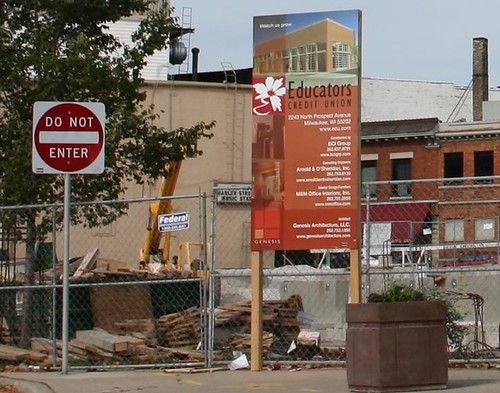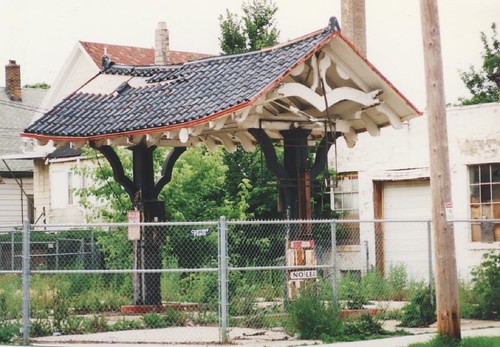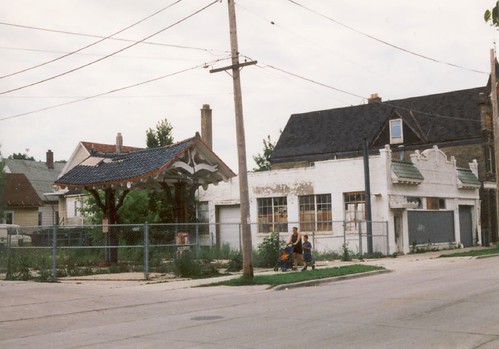I was right... and I was wrong.


They tore down the blue building, alright -- much to my regret. But in its place is coming... a building of similar mass and footprint. Meanwhile, the gas station lot has got its own building already, a brand-new Bruegger's Bagels.
Whahhhh?

Make no mistake, this is definitely an improvement over the vacant gas station (even when it was occupied.) But... I'm a little surprised that something more ambitious didn't arise here.
Meanwhile, the blue building will be replaced by a new branch building for the Educator's Credit Union. Trading out a two-story building for a one-story building? How does that work?

The new building is purported to be a Prairie Style structure, though it's hard to discern from the rendering shown here. The architect, Racine's Genesis Architecture, does show some beautiful Prairie Style work on their web site, so perhaps it's just down to my crappy photograph of the sign.
But I miss the blue building. It's yet another case of tearing down something not just because it's old, but because it's the wrong kind of old. We need a new old instead, an older old! The style of forty years ago is never new enough, and never old enough. By the time Midcentury Modern has aged enough to be old, valued and historic, by the time we're far enough removed from its time to look back on it with fresh eyes and truly appreciate it... Milwaukee will have torn it all down.

Additionally, if the building absolutely had to go... I really wanted one of those bricks.

